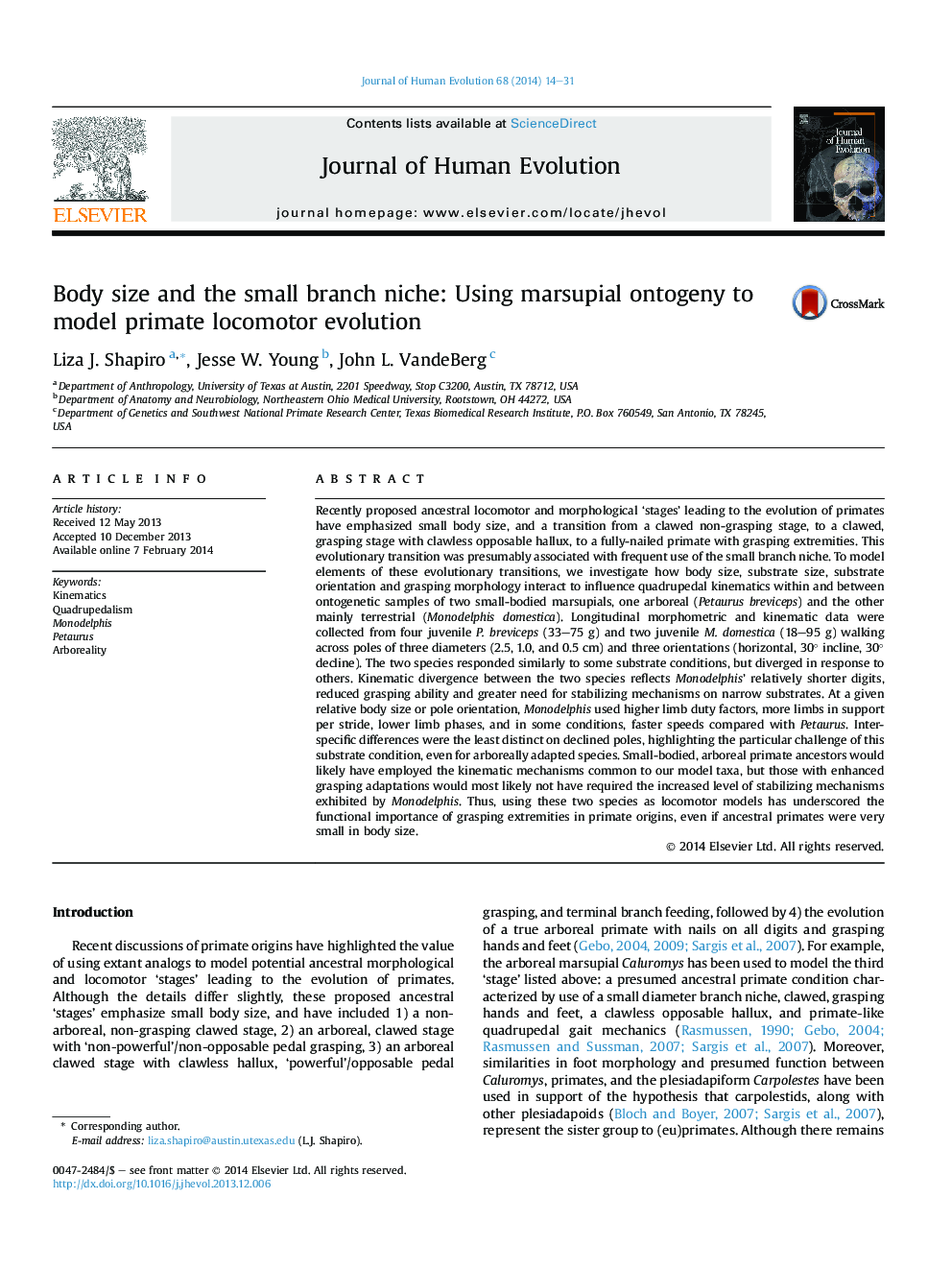| کد مقاله | کد نشریه | سال انتشار | مقاله انگلیسی | نسخه تمام متن |
|---|---|---|---|---|
| 4556172 | 1628181 | 2014 | 18 صفحه PDF | دانلود رایگان |

Recently proposed ancestral locomotor and morphological ‘stages’ leading to the evolution of primates have emphasized small body size, and a transition from a clawed non-grasping stage, to a clawed, grasping stage with clawless opposable hallux, to a fully-nailed primate with grasping extremities. This evolutionary transition was presumably associated with frequent use of the small branch niche. To model elements of these evolutionary transitions, we investigate how body size, substrate size, substrate orientation and grasping morphology interact to influence quadrupedal kinematics within and between ontogenetic samples of two small-bodied marsupials, one arboreal (Petaurus breviceps) and the other mainly terrestrial (Monodelphis domestica). Longitudinal morphometric and kinematic data were collected from four juvenile P. breviceps (33–75 g) and two juvenile M. domestica (18–95 g) walking across poles of three diameters (2.5, 1.0, and 0.5 cm) and three orientations (horizontal, 30° incline, 30° decline). The two species responded similarly to some substrate conditions, but diverged in response to others. Kinematic divergence between the two species reflects Monodelphis' relatively shorter digits, reduced grasping ability and greater need for stabilizing mechanisms on narrow substrates. At a given relative body size or pole orientation, Monodelphis used higher limb duty factors, more limbs in support per stride, lower limb phases, and in some conditions, faster speeds compared with Petaurus. Interspecific differences were the least distinct on declined poles, highlighting the particular challenge of this substrate condition, even for arboreally adapted species. Small-bodied, arboreal primate ancestors would likely have employed the kinematic mechanisms common to our model taxa, but those with enhanced grasping adaptations would most likely not have required the increased level of stabilizing mechanisms exhibited by Monodelphis. Thus, using these two species as locomotor models has underscored the functional importance of grasping extremities in primate origins, even if ancestral primates were very small in body size.
Journal: Journal of Human Evolution - Volume 68, March 2014, Pages 14–31